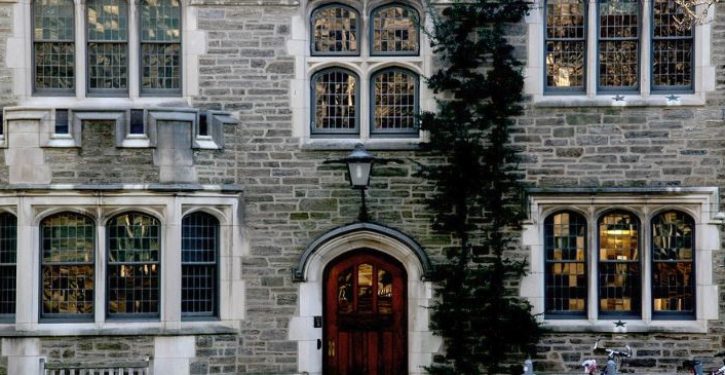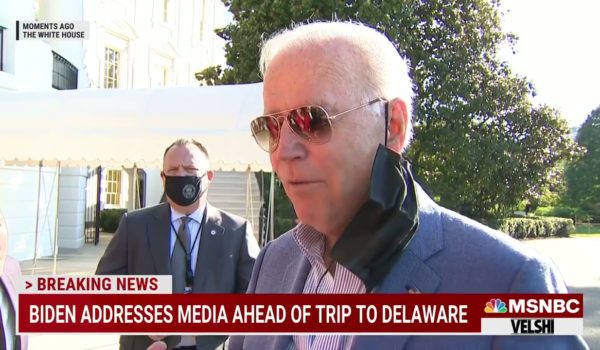
Over 100 colleges have closed or merged since 2016. The College Fix reports on one example:
The University of Saint Katherine, a small nonprofit in North San Diego County, recently announced it will close May 18, citing “financial pressure due to unprecedented inflation and rising state-mandated labor costs.”
It’s not alone. Nationwide, universities face financial hardships that appear to be getting worse. More than 100 colleges and universities have closed or merged, or announced plans to, over the last eight years, according to a tracker updated this month by Higher Ed Dive.
The list includes 108 colleges since 2016, but 108 is well below the true number, because the list does not include for-profit colleges or mergers between state colleges. The true number is more than 130 colleges, if one adds to the list two dozen well-known examples of for-profit colleges closing and state colleges merging.
The closures span the spectrum of public and private universities from California to Maine, showing the issue is not localized to any one region or sector….
The continued fallout from COVID-19 lockdowns, cynicism about the return of investment on degrees, a growing praise for vocational and tech jobs, concerns about bias in academia, as well as other factors, have left many already struggling schools with no alternative but to merge with other campuses or shut down altogether, according to experts….Many universities are now in a position in which they must close their doors.
One example is the College of Saint Rose in Albany, New York. Its communications director, Denise Dagnino, laments that a “demographic cliff” is shrinking enrollments. “There are fewer traditional-age, college-bound students in the U.S., so the existing pool of new students has diminished overall,” Dagnino says. The pool of college-age students has fallen further due to rising skepticism about the value of a college degree, she notes. The COVID pandemic also contributed to the closure of many colleges in the northeast, she says.
Saint Rose will close this June at the end of this academic year. Cabrini University in Radnor, Pennsylvania will also close this June.
Helen Drinan, interim president of Cabrini University, says “the pandemic somewhat masqueraded a lot of burdens already faced by schools which are tuition dependent, have modest endowments, and may be carrying debt as well.” Closures were temporarily postponed by billions in federal aid during the COVID pandemic, but that merely postponed tough financial decisions colleges needed to make, which now are dictating closure of some institutions whose finances are simply unsustainable, she says.
Drinan, like Dagnino, laments the “demographic cliff” that is an existential threat to small private liberal arts colleges. Due to a decline in birthrates around the time of the Great Recession in 2007-09, there are not enough students enrolling to financially sustain as many colleges as currently exist. “For reasons we do not really understand, the normal percentage of high school grads moving into college simply has not materialized for the last few years … Add all these factors together and you are seeing a ‘perfect storm’ of trouble for schools which do not have much financial strength.”….
The recent trend of college closures is not a shock, according to the State Higher Education Executive Officers Association.“The number of students graduating from high school is dwindling,” notes a SHEEOA analyst, pointing out that between 2020 and 2023, many institutions were kept afloat by increased federal and state spending that has since expired, ending a lifeline to many struggling institutions. The analyst predicted that the rate of college closures would remain the same or even grow in the near future.
In surveys, small businesses say they find many college graduates useless.
Yet, for years, the federal government has effectively encouraged people with few academic skills to go to college, rather than working in manufacturing or skilled trades, by heavily subsidizing college, rather than training for blue-collar jobs. The result is that there is a surplus of people who go to college despite not being college material, and then study useless, easy majors in college, and then never pay off their student loans.
Meanwhile, there is a big shortage of skilled manufacturing workers. And application rates to technical jobs that require vocational training dropped by 49% in 2022 compared to 2020, according to data from Handshake obtained by NPR. The US Chamber of Commerce in their 2023 economic projections predicts a “massive shortage of skilled workers.”
The Biden administration’s financial aid policies subsidize useless majors through income-based repayment plans, which write off a person’s student loans after 10 or 20 years of payments based on a percentage of income, no matter how low that income is. Its “Pay as You Earn” program allows eligible student-loan borrowers to cap monthly payments at 5 percent of their income over $33,000 a year), and have their remaining federal student loans forgiven after 20 years — or just 10 years, if they go to work for the government. So the less a student earns (because their major was in a useless subject), the less they pay on their student loans before the loans are forgiven.
The government has encouraged people who once would have become skilled and valuable factory workers to instead go to college and work in white-collar jobs, contributing to a severe shortage of the skilled workers needed by manufacturers. The Washington Post reported in 2012 on this problem:
the country … needs more manufacturing work. But … many manufacturers say that, in fact, the jobs are already here. What’s missing are the skilled workers needed to fill them. A metal-parts factory here has been searching since the fall for a machinist, an assembly team leader and a die-setter. Another plant is offering referral bonuses for a welder. And a company that makes molds for automakers has been trying for seven months to fill four spots on the second shift. “Our guys have been working 60 to 70 hours a week, and they’re dead. They’re gone,” said Corey Carolla, vice president of operations at Mach Mold, a 40-man shop in Benton Harbor, Mich. “We need more people. The trouble is finding them.”
In recent years, government officials have depicted white-collar jobs for college graduates as the way to go. President Obama advocated sending every high-school graduate to college or some form of higher education, while denigrating training for blue-collar industrial jobs. He has sought to increase spending on colleges, while slashing spending on more useful vocational education that could lead to work in manufacturing. As The Washington Post notes, as senior skilled factory workers are retiring, no one took their place, since “many of the younger workers who might have taken their place have avoided the manufacturing sector because of the . . . stigma of factory work.” .
Meanwhile, college students learn less and less with each passing year. “Thirty-six percent” of college students learned little in four years of college, and students now spend “50% less time studying compared with students a few decades ago, the research shows.”
While the federal government encourages young people to go to college by heavily subsidizing colleges and writing off many graduates’ student loans after 10 or 20 years (through income-based repayment plans that allow loan balances to be forgiven after 10 or 20 years of modest payments), it does nothing to encourage young people to get trained for decently-paid skilled trades and blue-collar jobs that have critical shortages of workers.



